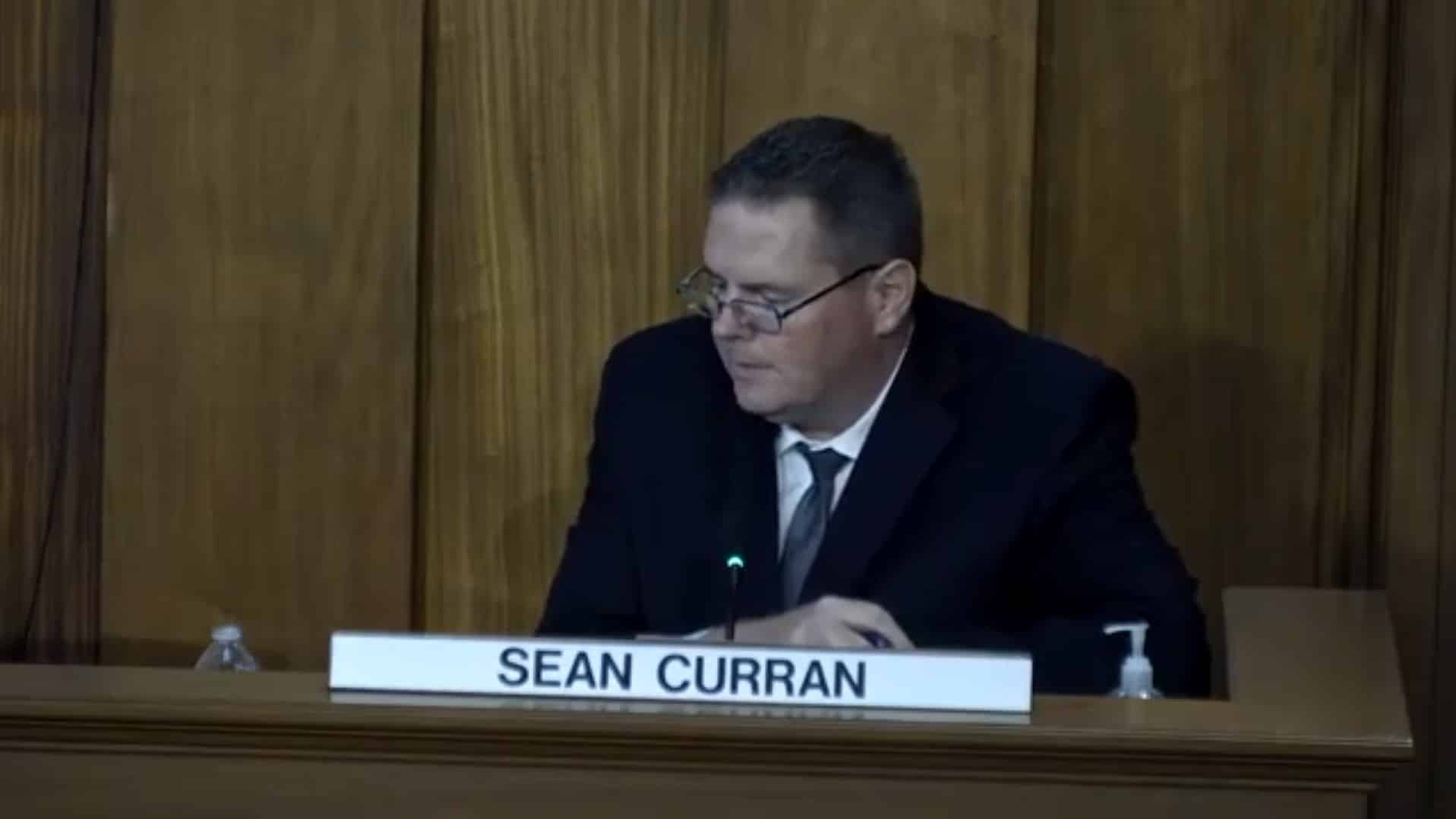At Large City Councilor Sean Curran presented an ordinance to the full council that would set square footage requirements and standards for new and adaptive reuse apartments. The council passed then first step of the ordinance after much debate during its July 14 meeting.
Photo credit: Focus Springfield
SPRINGFIELD — After back-and-forth debate that lasted just over 45 minutes, the Springfield City Council approved the first step of an ordinance amendment that sets minimum square footage standards for apartments and condominiums in the city.
Presented by At Large City Councilor Sean Curran, the ordinance states that any “new construction or adaptive reuse of an existing building must contain 500 square feet of living space per proposed apartment or condominium unit.”
Additionally, the ordinance sets minimum standards for one-bedroom, two-bedroom, three-bedroom and four-bedroom apartments, using what Curran said are design requirements from the state.
Curran said the new requirements would create transparency when developers come in front of the council, protect tenants from inhumane housing and provide the council with the expertise they need when making decisions on housing projects.
“We have a housing crisis here in Springfield, and unfortunately, we have a lot of out-of-town landlords,” said Curran “We’re charging more and more for less and less of a house. And I think that we need a little bit more oversight.”
The genesis of the ordinance came after Curran was surprised that a developer, who came in front of the council months ago, described his 375-square-foot units as “one-bedroom apartments.”
Curran felt the designation was a little deceptive.
“I think to many, you believe that it’s going to be a sizable one-bedroom apartment with a sizable kitchen, a sizable living room, sizable bedroom and a bathroom,” Curran said. “But it was kind of surprising to learn that 375 square feet would be considered one-bedroom apartments.”
Despite the minimum requirements, the ordinance still allows housing under 500 square feet to be built, but developers would have to file in writing with the building commissioner and then obtain a waiver from the City Council.
The new rules would not apply to ADUs, according to Curran, because those regulations are under a different section of the city code.
“I don’t think we’re talking about a seismic shift in the overall size of smaller units in the city, but it does provide some, what I think are adequate guardrails to allow for at least some type of municipal minimum standards,” said City Council President Michael Fenton. “Specifically, even thinking about the waiver provision with the building commissioner, that gives me a level of comfort that I think that weighs in favor of supporting [the ordinance].”
Although the ordinance passed the first step, not all councilors were on board with the effectiveness of the proposed standards. The council voted 8-4 in favor of the ordinance, but a second vote is necessary at a later meeting date before the new rules can be implemented.
At Large City Councilor Tracye Whitfield was among the most passionate dissenters of Curran’s proposal. She argued that the minimum standard of 500 feet is much higher than the state minimum requirement for a studio apartment, which is 200 square feet.
She also asserted that the ordinance itself, and the waiver requirement specifically, presents more unnecessary barriers for developers in the city.
“I cannot agree with this … knowing how hard it is already just to get from point A to point B to start developing,” Whitfield said. “We’re shooting ourselves in the foot adding more and more and more requirements for developers.”
Ward 3 City Councilor Melvin Edwards was also against the ordinance, stating that the struggle people experience when looking for housing in the city is exacerbated by the fact that Springfield has a dearth of housing.
“Springfield is already hard enough to do business in,” Edwards said. “Now you’re going to make it even harder for those of us who build housing to operate within the city.”
There is also the issue of how historic housing plays into this, according to Ward 4 City Councilor Malo Brown. If some developers wanted to convert a historic building into residential units, Brown said they may not be able to meet the 500-square-foot requirement because they must build according to the design.
“I have been notified by a lot of developers who basically said that this will harm them as far as redeveloping any of the historic stuff that we have in place,” Brown said.
Aside from some dissenting councilors, other stakeholders in the city who provide housing were also concerned with the ordinance. At the council’s Economic Development Committee meeting, just days before the council meeting, Olivia Bernstein — the vice president of supportive housing at the Mental Health Association — was worried that the waiver requirement would create another obstacle in a world where housing for homeless individuals is needed now more than ever.
She said MHA currently works with 200 unhoused individuals and is partnering with Home City Development for 20 newly-renovated units at Chestnut Crossing for homeless individuals that have been houseless for a year or more.
“I hear that this ordinance is intended to promote the quality and consistency and housing. And as we’ve talked about, it may make it unintentionally harder to get people off the street and out of shelter into their own apartment,” Bernstein said. “It would be more challenging because requiring a waiver could slow down the process and could deter developers. It could prevent converting existing structures into small apartment units.”
Councilors, however, see the benefits Curran put forward. Ward 8 City Councilor Zaida Govan said she thinks the ordinance is a good idea because it prevents landlords from taking advantage of tenants by charging obscene prices for smaller square footage apartments.
Meanwhile, Ward 6 City Councilor Victor Davila, argued that he did not think the waiver requirement for apartments under 500 square feet was as cumbersome of a step as people were saying.
“You may argue that you have to file extra paperwork, but the end result is to ensure that we have livable space here in the city that is dignified,” Davila said. “And I don’t see this as a rent control measure at all. I see this as a dignified housing.”
Curran concurred with Davila’s sentiments.
“Sooner or later, somebody has to stand up for the tenants and the working-class communities here in the city of Springfield,” Curran said. “And we hear so much about homeowners, but the renters, they deserve a seat at the table. I think this legislation is a good first step.”


